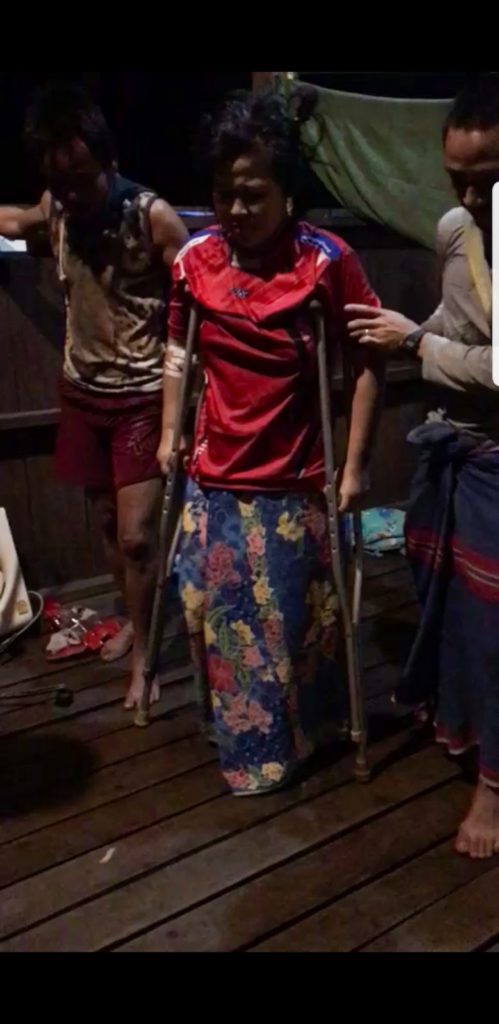Out of the Ashes Comes New Life: A Patient Story From a Country on Fire
25 July 2022
Karen State, Burma
The world has watched a country on fire for the last seventy-five years; however, over this past year, more eyes have been opened to the horrific reality that Burma’s own military is the arsonist behind the fire- both figuratively and literally. Local sources report that the Burma Army has burned down 11, 000 homes since the coup of February 1, 2021 leaving countless civilian lives upended and in ashes.
One place of refuge from Burma Army attacks, and hope for those affected, has been the Free Burma Rangers’ (FBR) Jungle School of Medicine-Kawthoolei (JSMK), in Karen State, Burma. The clinic operates year-round and is predominantly run by the local staff. The Karen have culture known for its peaceful way of life and the Karen staff at JSMK are no exception, and are equally knowledgeable, hard-working, and kind. Many volunteers who come to JSMK from the West are surprised when first stepping foot into the facilities. The inpatient department is a large wooden house built on stilts with open walls, similar to most ethnic Karen structures. On the inside there are no curtains separating the patients’ mats on the floor. The patients prefer it this way: a communal environment that allows them to see and be with each other, even while they are sick.
A surgeon who visited in early 2022 shares, “In the West [we] could learn a lot from the Karen: how to live well with disease; how to care for our neighbor and live with dignity.” This volunteer was able to witness and play a pivotal role in a unique patient case during his time at JSMK. He shares the story of Naw Day Mu here below.
Na Day Mu
Naw Day Mu is a stubborn 23-year-old woman. I’m hesitant to use that word: as if a bombing victim could still be stubborn after all she has endured. She complained a lot and gave the staff and I a hard time. She was reluctant to accept help from others and wanted to do most things herself. I came to admire her quite a bit by the time we went our separate ways.
As the indiscriminate bombs fell from the jets on her village, I imagined her and her husband clinging to their two adorable, playful daughters as their bamboo house erupted in flames. The next few moments must have been a blur: the house collapsing, metal and debris flying through the air. Shock, confusion, and pain must have been felt as the bombing continued. Naw Day Mu’s parents in the house next door were murdered by a Burma Army bomb dropped on their house. Metal shrapnel fragments from the bomb reached Naw Day Mu and tore through her body.
Three days later Naw Day Mu was carried into JSMK on a “bambulance”: a hammock strung across a bamboo pole for people to carry the ill and wounded through mountainous terrain. She had a fever and an infection raging through her body. The shrapnel had entered her lower back by her spine and right buttock.
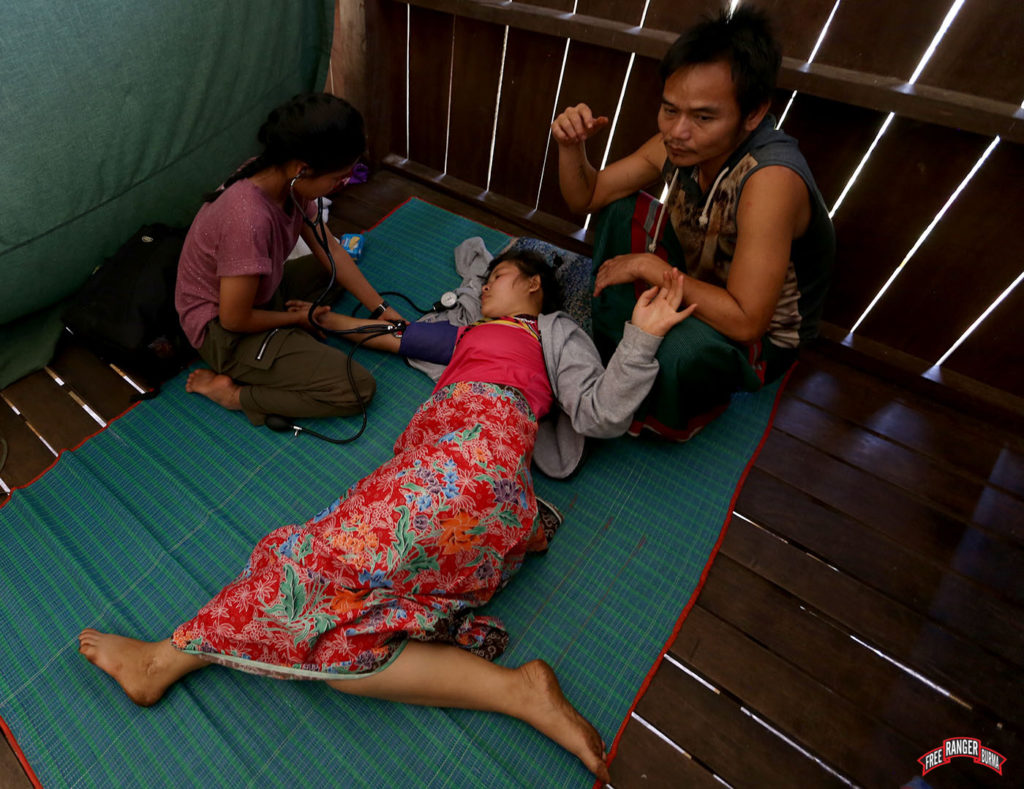
She needed to go to the operating room to dress her wounds and so I could potentially remove the shrapnel pieces. Her left foot was numb and she couldn’t walk. The shrapnel piece near her spine had possibly severed one of the nerve roots.
In the operating room, Naw Day Mu began screaming, out of fear and pain. Despite telling her what we were about to do, she was still very scared. I gave her a dose of a general anesthetic which would have made you or I unconscious for quite some time. With her, it gave us only about two minutes of respite from her hysterical panic. She had not reached post-traumatic stress disorder yet but was still experiencing acute stress after the horrific trauma of the past few days. She thus required a much higher dose of anesthesia than usual.
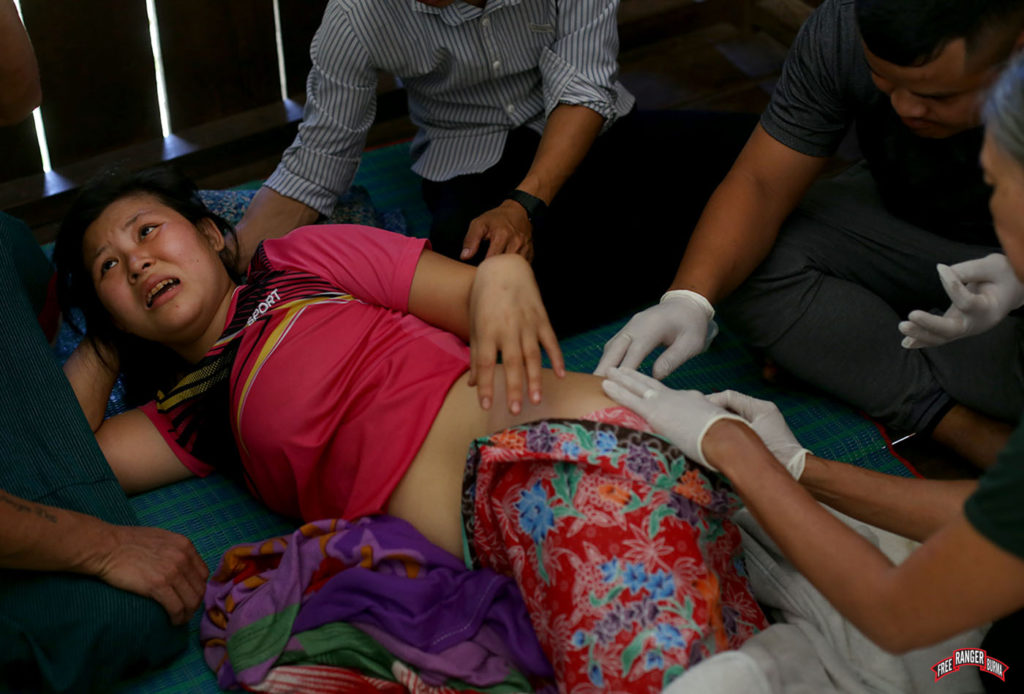
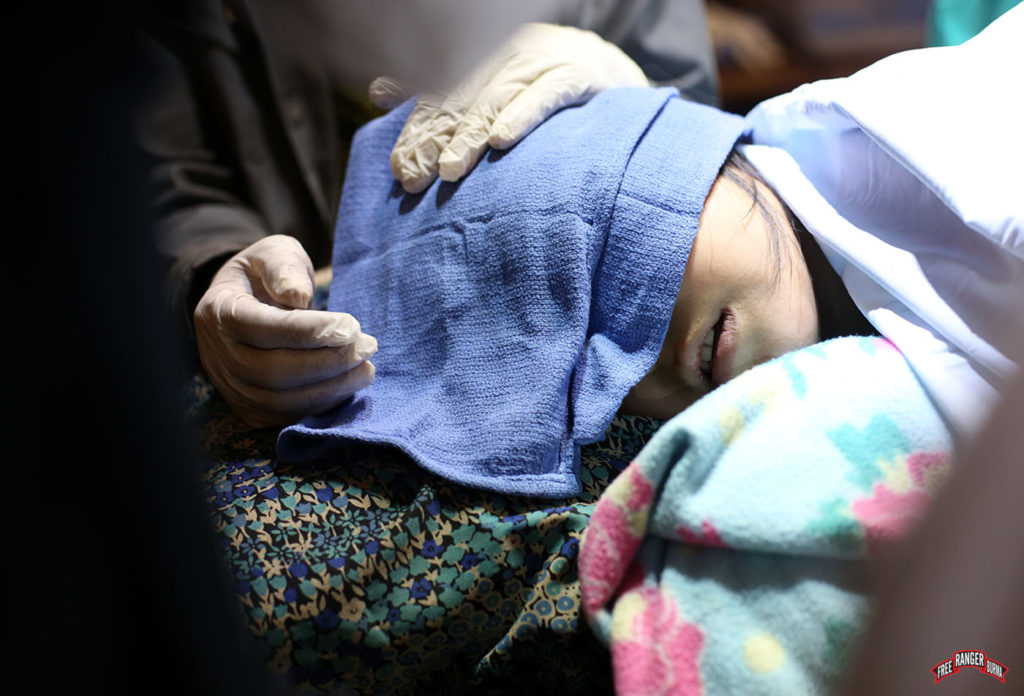
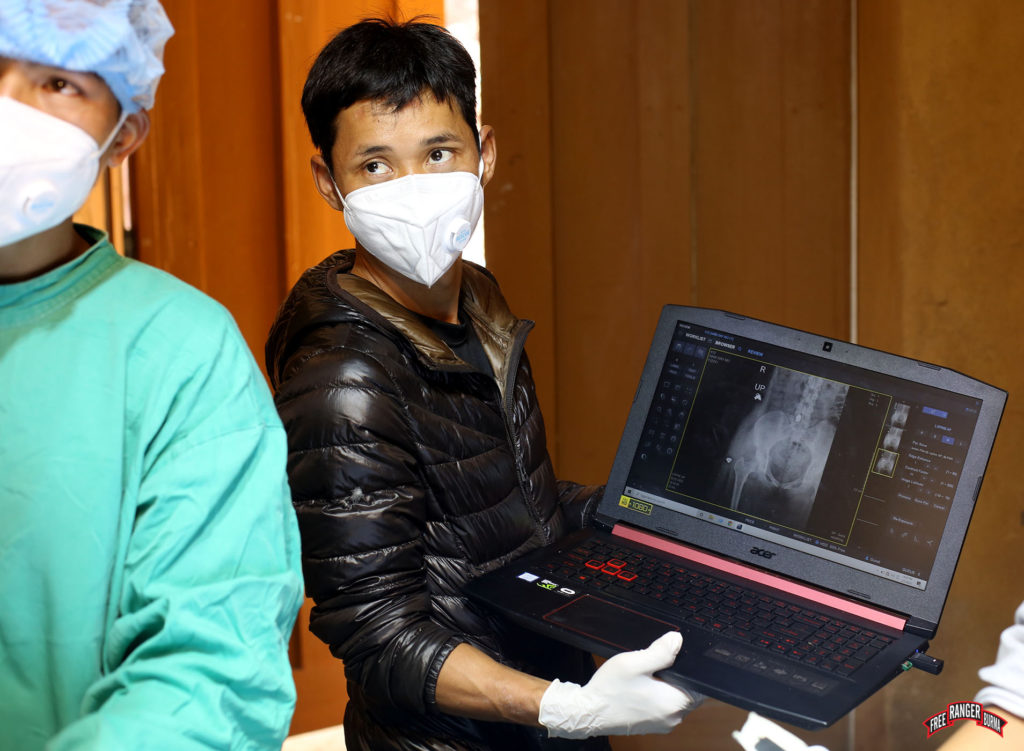
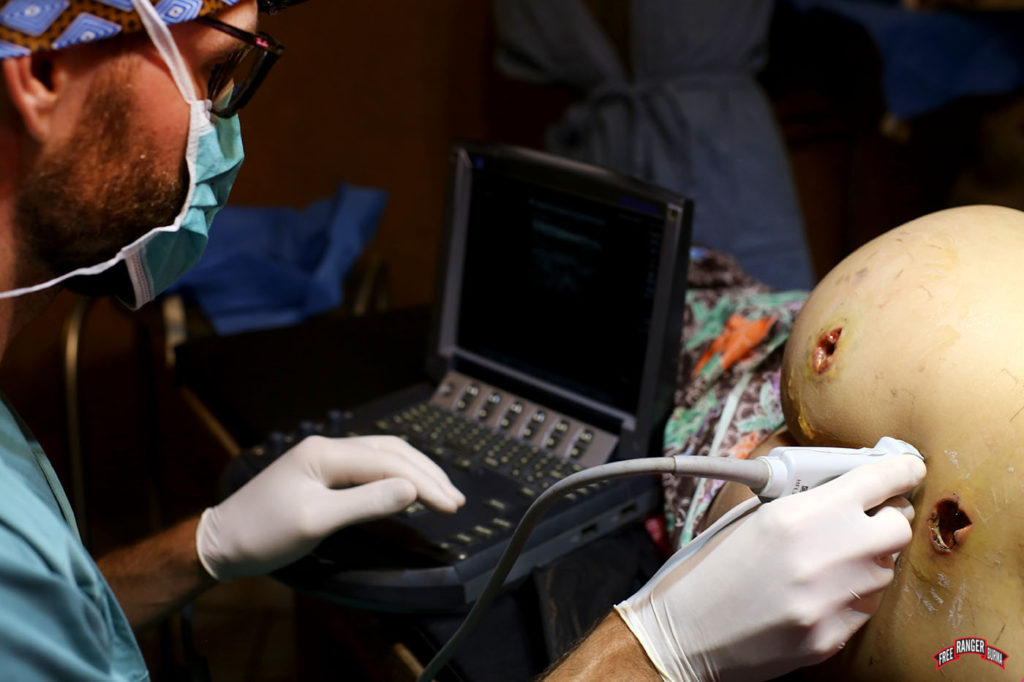
I removed the necrotic skin where the shrapnel had torn into her, debriding the infected muscle. Her first wound was located on her lumbar spine. It oozed pus while I pushed my finger down the tract leading to her spine. I felt splinters of bone fragments. Once removed, all I could feel was a hole going through the bony vertebral body. I decided to leave the fragment of shrapnel there as I didn’t want to cause more harm than the shrapnel already had.
The second fragment entered on the medial side of her buttock and the x-ray showed it was near her outermost hip. The canal was over 20cm long. I made an incision near her hip and took out a 2 x 2 cm piece of sharp metal. It was remarkably heavy for its size. The canal was then able to drain the infection through both holes.
The operation was over, but the process of recovery was just beginning. The medics tended to Naw Day Mu’s wounds and we debrided them every few days. During this time an FBR team went to survey her village where the attack had happened.
Gradually over the weeks, Naw Day Mu gained strength and her wounds slowly started to heal. I set a hard training program in order to get her mobile. I had to keep reminding myself that here is a patient who has been mortally wounded, sick with grief over the death of her parents, is still in acute stress, and is now on the path of slowly healing her body. The psychological trauma far outweighed her physical trauma. I do not know how the Karen process grief or sadness, and I felt at a loss how to help in this area of treating holistically.
It started with sitting, standing, and then one day she looked at me aghast when I turned up with crutches. She dramatically shouted out, “They are not my style!” and began trying to stand. Always fiercely independent, she refused the medics’ attempts to help her to her feet. Instead, she struggled climbing up a chair. She pulled with her arms and pushed off the wooden wall for support. She shouted at her husband during this phase but wouldn’t accept his supporting hand. Once standing she shook herself and gained composure before trying the crutches.
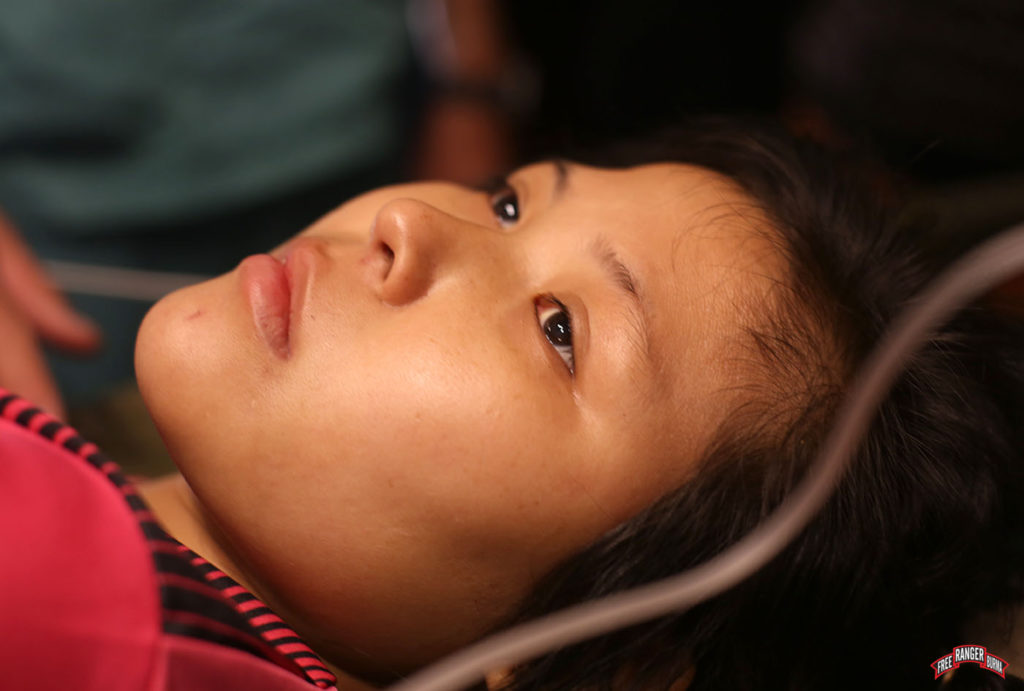
A verse I found fitting for Naw Day Mu was Isaiah 60:1. It reads, “Arise, shine, (Naw Day Mu) for your light has come, and the glory of the LORD rises upon you.”
We clapped and shouted out praise at her progress. But there was even more to be praised shortly after. Before the prescribed morning physical training routine, someone noticed that Naw Day Mu had been vomiting regularly. I originally thought it was due to her morning dose of antibiotics, but an astute nurse said, “Guys come on, she is obviously pregnant.”
“Not a chance,” I thought. A fetus couldn’t survive that bombing attack. I humbled myself and on the patchy ultrasound screen I saw with my own eyes a small heartbeat in Naw Day Mu’s womb. Her little baby had survived a bombing attack from the Burma Army. What a miracle! Again, a verse came to mind for her: I thought of Psalm 139:13 which reads, “For you created my inner being; you knit me together in my mother’s womb.” All glory be to Christ. How beautiful life is as it withstands so much oppression. How a light shining in the darkness cannot be overcome.
The dark and heart-breaking numbers of civilian deaths are only but a single metric in measuring what is taking place across Burma. Innocent lives are being extinguished by the hands of the Burma Army, like Naw Day Mu’s parents, and yet, the rebellious miracle of new life cannot be stopped. Like the baby Naw Day Mu now carries, a small flame of hope for a brighter future in Burma burns on.
Thanks and God bless you,
Free Burma Rangers

